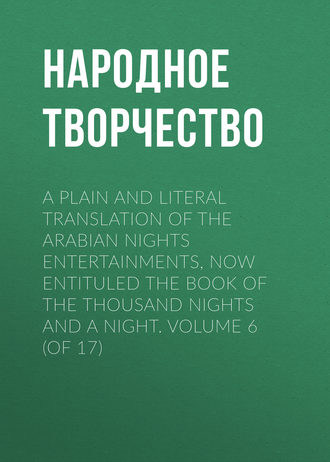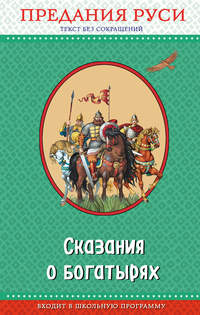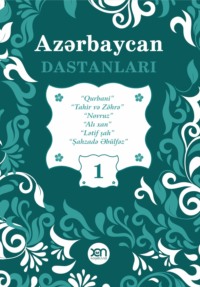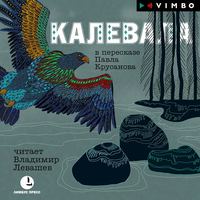 полная версия
полная версияA plain and literal translation of the Arabian nights entertainments, now entituled The Book of the Thousand Nights and a Night. Volume 6 (of 17)
Precautions (thwarted by Fate and Fortune), 167
Predestination (not Providence, a Moslem belief), 202
Prisons (Moslem), 244
Privy and bath favourite haunts of the Jinns, 141
Property (left by will), 213
Prophets (and their agnomina), 270
Prostration (must be made to Allah only), 136
Prothesis without apodosis (a favourite style in Arabic), 203; 239
Punctilios of the Desert, 264
Quarter (son of the = neighbour), 236
Ra’ad al-Kásif (Pr. N. = the loud-pealing Thunder), 221
Rafw = artistic style of darning, 198
Rahmah (Pr. N. = the puritanical “Mercy”), 226
Rais = captain, master (not owner) of a ship, 12
Rape (rendered excusable by wilfulness), 187
Ráy = rede (“private judgment”), 146
Ráyí = rationalist, ib.
Red habit (sign of wrath), 250
Refusal of a demand in marriage a sore insult, 262
Relations between Badawi tribes, 267
Retorts (of a sharp Fellah), 232
Ring (in memoriam), 199
–– (lost in the Harím raises jealous suspicion), 200
Rivers (underground), 63
Robe (the hidden, story of), 188
Ruby (of exceptional size), 66
Rustak (Al-), city of Oman, 289
Rukh (the world-wide Wundervogel), 16
–– (study of, by Prof. Bianconi), 49
Sá’a (measure of corn, etc.), 203
Sabbah-ak’ Allah bi’l khayr = Allah give thee good morning, 196
Sabúr = Sapor II, 274
Safe-guard (I am in thy = I appeal to thy honour), 158
Sahmhu = his shaft, 100
Sahím al-Layl (Pr. N. = he who shooteth an arrow by night), 261
Sail = torrent, 164
Sá’ikah = thunderbolt, 271
Sailor (Ar. equivalents for), 242
Sáis = groom, horsekeeper (Syce), 9
Sajjádah = prayer-rug, 193
Saksar (Pers. Sag-sar = dogs’ heads), 37
Sa’lab = fox, 211
Saláhitah (Al-), island, 30
Salámát = Welcome!, 232
Sales (formula of), 73
Samak = common fish, 69
Samúm = poisonous wind (Simoon), 88
Sandal (Ar. Na’al), 207
Saráb = mirage, 93
Sarandib = Selan-dwípa (Ceylon), 64
Sásá bin Shays, 274
Satan (his malice weak in comparison with that of women), 144
Sea of Al-Karkar, 101
Sea-stallion (myth of the), 9
Serpent (breaks the bones of its devoured prey by winding round a tree or rock), 29
–– (preserving from sickness), 66
–– (in Ar. mostly feminine), 75
Shakiriyah = Kshatriya caste, 10
Shamardal (Al-) = the Tall One, 221
Shams al-Daulah (imaginary king of Egypt), 241
Shaykh al-Bahr = the Chief of the Sea (-coast), 51, 53
Shaykh of the thieves (one of the worthies of a Moslem capital), 204
Shays = Ab Seth, 283
Shoe (Ar. Markúb, Na’al), 207
Shrouds (carried by the pilgrims to Meccah), 61
Sight comprehendeth Him not, etc., 282
Signs of Allah = Koranic versets, 144
Simoon (Ar. Samúm = poisonous wind), 88
Sindbád (not to be confounded with the eponym of the Sindibád-námah), 4
Sindibád the Sage, 124
Sindibád-námah (Persian romance), 122
Sindibad-námah (quoted), 129; 132; 134; 139; 143; 145; 150; 152; 169; 180; 183; 188; 202
Sírah (small fish, fry, sprat), 216
Siyághosh, see Tufah.
Sold to thee for monies received (formula of Moslem sales), 73
Solomon (his food-tray), 80
–– (his seal-ring), 84
–– (the Apostle of Allah), 99
–– (his Wazír Asaf), ib.
–– (his trick upon Bilkís), 113
Spears and javelins, 263
Stallion (I am not one to be struck on the nose), 262
Steel (Ar. Bulád), 115
Stirrup (walking by the), 234
Stones (precious, and their mines), 18
–– (removed from the path by the pious), 190
Suez (Ar. Al-Suways), 80
Suways (Al-) = Suez, ib.
Swimming (studied in Baghdad), 134
Sword (the enchanted), 230
Tadmurah (founds Tadmur or Palmyra), 116
Talking birds (watching over wives), 132
Tanjah = Tangiers, 106
Target (Ar. darakah), 9
Ta’rísak = thy going between (pimping), 196
Tasmeh-pá = strap-legs, 51
Tawáf (circuit of the Ka’abah), 242
Thousand thousand = a million, 98
Three things are better than other three, 5
“Throwing the handkerchief”, 285
Tin (Ar. Kazdír), 39
Tingis = Tanjah (Tangiers), 106
Torrents (Ar. Sail) a dangerous feature in Arabia, 164
Tortoise (the colossal), 33
Toujours perdrix, 130
Traveller (a model one tells the truth when an untruth would not serve him), 7
Tribes (relations between), 267
Tufah = felis caracal, lynx, 260
Tusks (not teeth), 82
Tyrant (from —, to tyrant = from official to official), 214
Ujb = arrogance (in the Spanish sense of gaiety, etc.), 164
Ulysses (the Arabian), 40
Unhappy thou!, 285
Underground rivers, 63
Upakoshá (Vararuchi’s wife), 172
Usirát (Al-), island, 57
Vengeance (of a disappointed suitor apprehended), 286
Vivisepulture, 41
Wa’ar = rough ground unfit for riding, 140
Wadd, Suwá’a and Yaghús, 282
Wady al-Ward (the Vale of Roses), 276
Walímah = marriage-feast, 74
Walking afoot (not dignified), 227
Wanderer in the mountains = a recluse avoiding society, 158
Wars (caused by trifles frequent in Arab history), 142
Wasm = tribal sign, 163
Water-melons (eaten with rice and meat), 208
Week-days (old names for), 190
Whale (still common off the East African coast), 11
White (colour of the Ommiades), 86
–– robes denote grace and mercy, 250
Wife (Aurat), 30
–– (called “Family”), 75
Will he not care? = he shall answer for this, 245
Windows (looking out of, a favourite occupation in the East and South), 167
Wishes (tale of the three), 180
Witches (and their vehicles), 158
Witness (bear —, against me, i.e. in case of my denial), 286
Wives (and their suitors), 172
Woman (in Hindostani jargon = aurat), 30
–– (her shame extends from head to toes), 118
–– (their cunning and malice), 144
–– (corrupts woman more than men do), 152
–– (knowing enough without learning to read and write), 168
–– (of Kashmír), 156
–– (her female visitors unknown to the husband, except by hearsay), 199
–– (words used only by them, not by men), 233
Ya’arub (eponymus of an Oman tribe), 260
Yá miskín = O poor devil, 219
Yauh! Yauh! = Alas, 235
Yaum mubárak = a blessed day, 215
Zabbat = lizard; bolt, 247
Zughzaghán (Abú Massáh = Father of the Sweeper) = magpie, 182
Zahra = the flowery, 145
Zahwah = mid-time between sunrise and noon, 35
Zalamah (Al-) = “tyranny”, 214
Zanj = Zang-bar (Black-land, Zanzibar), 104
Záwiyah = oratory, 259
Zu al-Autád = the contriver of the stakes (Pharaoh), 118
1
Lane (vol. iii. 1) calls our old friend “Es-Sindibád of the Sea,” and Benfey derives the name from the Sanskrit “Siddhapati” = lord of sages. The etymology (in Heb. Sandabar and in Greek Syntipas) is still uncertain, although the term often occurs in Arab stories; and some look upon it as a mere corruption of “Bidpai” (Bidyápati). The derivation offered by Hole (Remarks on the Arabian Nights’ Entertainments, by Richard Hole, LL.D. London, Cadell, 1797) from the Persian ábád (a region) is impossible. It is, however, not a little curious that this purely Persian word (= a “habitation”) should be found in Indian names as early as Alexander’s day, e.g. the “Dachina bades” of the Periplus is “Dakhshin-ábád,” the Sanskr. being “Dakshinapatha.”
2
A porter like the famous Armenians of Constantinople. Some edits call him “Al-Hindibád.”
3
Arab. “Karawán” (Charadrius œdicnemus, Linn.): its shrill note is admired by Egyptians and hated by sportsmen.
4
This ejaculation, still popular, averts the evil eye. In describing Sindbad the Seaman the Arab writer seems to repeat what one reads of Marco Polo returned to Venice.
5
Our old friend must not be confounded with the eponym of the “Sindibád-námah;” the Persian book of Sindbad the Sage. See Night dlxxviii.
6
The first and second are from Eccles. chapts. vii. 1, and ix. 4. The Bul. Edit. reads for the third, “The grave is better than the palace.” None are from Solomon, but Easterns do not “verify quotations.”
7
Arab. “Kánún”; a furnace, a brasier before noticed (vol. v., p. ); here a pot full of charcoal sunk in the ground, or a little hearth of clay shaped like a horse-shoe and opening down wind.
8
These fish-islands are common in the Classics, e.g. the Pristis of Pliny (xvii. 4), which Olaus Magnus transfers to the Baltic (xxi. 6) and makes timid as the whales of Nearchus. C. J. Solinus (Plinii Simia) says, “Indica maria balænas habent ultra spatia quatuor jugerum.” See also Bochart’s Hierozoicon (i. 50) for Job’s Leviathan (xli. 16–17). Hence Boiardo (Orl. Innam, lib. iv.) borrowed his magical whale and Milton (P.L. i.) his Leviathan deemed an island. A basking whale would readily suggest the Kraken and Cetus of Olaus Magnus (xxi. 25). Al-Kazwíni’s famous treatise on the “Wonders of the World” (Ajáib al-Makhlúkát) tells the same tale of the “Sulahfah” tortoise, the colossochelys, for which see Night dl.
9
Sindbad does not say that he was a shipwrecked man, being a model in the matter of “travellers’ tales,” i.e. he always tells the truth when an untruth would not serve him.
10
Lane (iii. 83) would make this a corruption of the Hindu “Maharáj” = great Rajah: but it is the name of the great autumnal fête of the Guebres; a term composed of two good old Persian words “Mihr” (the sun, whence “Mithras”) and “ján” = life. As will presently appear, in the days of the Just King Anushirwán, the Persians possessed Southern Arabia and East Africa south of Cape Guardafui (Jird Háfún.) On the other hand, supposing the word to be a corruption of Maharaj, Sindbad may allude to the famous Narsinga kingdom in Mid-south India whose capital was Vijayanagar; or to any great Indian Rajah even he of Kachch (Cutch), famous in Moslem story as the Balhará (Ballaba Rais, who founded the Ballabhi era; or the Zamorin of Camoens, the Samdry Rajah of Malabar). For Mahrage, or Mihrage, see Renaudot’s “Two Mohammedan Travellers of the Ninth Century.” In the account of Ceylon by Wolf (English Transl. p. 168) it adjoins the “Ilhas de Cavalos” (of wild horses) to which the Dutch merchants sent their brood-mares. Sir W. Jones (Description of Asia, chapt. ii.) makes the Arabian island Soborma or Mahráj = Borneo.
11
Arab. “Sáis”; the well-known Anglo-Indian word for a groom or rather a “horsekeeper.”
12
Arab. “Darakah”; whence our word.
13
The myth of mares being impregnated by the wind was known to the Classics of Europe; and the “sea-stallion” may have arisen from the Arab practice of picketing mare asses to be covered by the wild ass. Colonel J. D. Watson of the Bombay Army suggests to me that Sindbad was wrecked at the mouth of the Ran of Kachch (Cutch) and was carried in a boat to one of the Islands there formed during the rains and where the wild ass (Equus Onager, Khar-gadh, in Pers. Gor-khar) still breeds. This would explain the “stallions of the sea” and we find traces of the ass blood in the true Kathiawár horse, with his dun colour, barred legs and dorsal stripe.
14
The second or warrior caste (Kshatriya), popularly supposed to have been annihilated by Battle-axe Ráma (Parashu Ráma); but several tribes of Rajputs and other races claim the honourable genealogy. Colonel Watson would explain the word by “Shakháyát” or noble Káthis (Kathiawar-men), or by “Shikári,” the professional hunter here acting as stable-groom.
15
In Bul. Edit. “Kábil.” Lane (iii. 88) supposes it to be the “Bartail” of Al-Kazwini near Borneo and quotes the Spaniard B. L. de Argensola (History of the Moluccas) who places near Banda a desert island, Poelsatton, infamous for cries, whistlings, roarings and dreadful apparitions, suggesting that it was peopled by devils (Stevens, vol. i., p. 168).
16
Some texts substitute for this last phrase, “And the sailors say that Al-Dajjál is there.” He is a manner of Moslem Antichrist, the Man of Sin per excellentiam, who will come in the latter days and lay waste the earth, leading 70,000 Jews, till encountered and slain by Jesus at the gate of Lud. Sale’s Essay, sect. 4.
17
Also from Al-Kazwini: it is an exaggerated description of the whale still common off the East African Coast. My crew was dreadfully frightened by one between Berberah and Aden. Nearchus scared away the whales in the Persian Gulf by trumpets (Strabo, lib. xv.). The owl-faced fish is unknown to me: it may perhaps be a seal or a manatee. Hole says that Father Martini, the Jesuit (seventeenth century), placed in the Canton Seas, an “animal with the head of a bird and the tail of a fish,”—a parrot-beak?
18
The captain or master (not owner) of a ship.
19
The kindly Moslem feeling, shown to a namesake, however humble.
20
A popular phrase to express utter desolation.
21
The literature of all peoples contains this physiological perversion. Birds do not sing hymns; the song of the male is simply to call the female and when the pairing-season ends all are dumb.
22
The older “roc.” The word is Persian, with many meanings, e.g. a cheek (Lalla “Rookh”); a “rook” (hero) at chess; a rhinoceros, etc. The fable world-wide of the wundervogel is, as usual, founded upon fact: man remembers and combines but does not create. The Egyptian Bennu (Ti-bennu = phœnix) may have been a reminiscence of gigantic pterodactyls and other winged monsters. From the Nile the legend fabled by these Oriental “putters out or five for one” overspread the world and gave birth to the Eorosh of the Zend, whence the Pers. “Símurgh” (= the “thirty-fowl-like”), the “Bar Yuchre” of the Rabbis, the “Garuda” of the Hindus; the “Anká” (“longneck”) of the Arabs; the Hathilinga bird, of Buddhagosha’s Parables, which had the strength of five elephants; the Kerkes of the Turks; the Gryps of the Greeks; the Russian “Norka”; the sacred dragon of the Chinese; the Japanese “Pheng” and “Kirni”; the “wise and ancient Bird” which sits upon the ash-tree Yggdrasil, and the dragons, griffins, basilisks, etc. of the Middle Ages. A second basis wanting only a superstructure of exaggeration (M. Polo’s Ruch had wing-feathers twelve paces long) would be the huge birds but lately killed out. Sindbad may allude to the Æpyornus of Madagascar, a gigantic ostrich whose egg contains 2.35 gallons. The late Herr Hildebrand discovered on the African coast, facing Madagascar, traces of another huge bird. Bochart (Hierozoicon ii. 854) notices the Avium Avis Ruch and taking the pulli was followed by lapidation on the part of the parent bird. A Persian illustration in Lane (iii. 90) shows the Rukh carrying off three elephants in beak and pounces with the proportions of a hawk and field mice: and the Rukh hawking at an elephant is a favourite Persian subject. It is possible that the “Twelve Knights of the Round Table” were the twelve Rukhs of Persian story. We need not go, with Faber, to the Cherubim which guarded the Paradise-gate. The curious reader will consult Dr. H. H. Wilson’s Essays, edited by my learned correspondent, Dr. Rost, Librarian of the India House, vol. i. pp. 192–3.
23
It is not easy to explain this passage unless it be a garbled allusion to the steel-plate of the diamond-cutter. Nor can we account for the wide diffusion of this tale of perils unless to enhance the value of the gem. Diamonds occur in alluvial lands mostly open and comparatively level, as in India, the Brazil and the Cape. Archbishop Epiphanius of Salamis (ob. A.D. 403) tells this story about the jacinth or ruby (Epiphanii Opera, a Petaio, Coloniæ 1682); and it was transferred to the diamond by Marco Polo (iii. 29, “of Eagles bring up diamonds”) and Nicolò de Conti, whose “mountain Albenigaras” must be Vijayanagar in the kingdom of Golconda. Major Rennel places the famous mines of Pauna or Purna in a mountain-tract of more than 200 miles square to the south-west of the Jumna. Al-Kazwini locates the “Chaos” in the “Valley of the Moon amongst the mountains of Serendib” (Ceylon); the Chinese tell the same tale in the campaigns of Hulaku; and it is known in Armenia. Col. Yule (M. P. ii. 349) suggests that all these are ramifications of the legend told by Herodotus concerning the Arabs and their cinnamon (iii. 3). But whence did Herodotus borrow the tale?
24
Sindbad correctly describes the primitive way of extracting camphor, a drug unknown to the Greeks and Romans, introduced by the Arabs and ruined in reputation by M. Raspail. The best Laurus Camphora grows in the Malay Peninsula, Sumatra and Borneo: although Marsden (Marco Polo) declares that the tree is not found South of the Equator. In the Calc. Edit. of two hundred Nights the camphor-island (or peninsula) is called “Al-Ríhah” which is the Arab name for Jericho-town.
25
In Bul. Edit. Kazkazan: Calc. Karkaddan and others Karkand and Karkadan; the word being Persian, Karg or Kargadan; the καρτάζυνον of Ælian (Hist. Anim. xvi. 21). The length of the horn (greatly exaggerated) shows that the white species is meant; and it supplies only walking-sticks. Cups are made of the black horn (a bundle of fibres) which, like Venetian glass, sweat at the touch of poison. A section of the horn is supposed to show white lines in the figure of a man, and sundry likenesses of birds; but these I never saw. The rhinoceros gives splendid sport and the African is perhaps the most dangerous of noble game. It has served to explain away and abolish the unicorn among the Scientists of Europe. But Central Africa with one voice assures us that a horse-like animal with a single erectile horn on the forehead exists. The late Dr. Baikic, of Niger fame, thoroughly believed in it and those curious on the subject will read about Abu Karn (Father of a Horn) in Preface (pp. xvi.-xviii.) of the Voyage au Darfour, by Mohammed ibn Omar al-Tounsy (Al-Tunisi), Paris, Duprat, 1845.
26
Ibn al-Wardi mentions an “Isle of Apes” in the Sea of China and Al-Idrísi places it two days’ sail from Sukutra (Dwipa Sukhatra, Socotra). It is a popular error to explain the Homeric and Herodotean legend of the Pygmies by anthropoid apes. The Pygmy fable (Pygmæi Spithamai = 1 cubit = 3 spans) was, as usual, based upon fact, as the explorations of late years have proved: the dwarfs are homunculi of various tribes, the Akka, Doko, Tiki-Tiki, Wambilikimo (“two-cubit men”), the stunted race that share the central regions of Intertropical Africa with the abnormally tall peoples who speak dialects of the Great South African tongue, miscalled the “Bantu.” Hole makes the Pygmies “monkeys,” a word we have borrowed from the Italians (monichio à mono = ape) and quotes Ptolemy, Νῆσοι τῶν Σατυρῶν (Ape-islands) East of Sunda.
27
A kind of barge (Arab. Bárijah, plur. Bawárij) used on the Nile of sub-pyriform shape when seen in bird’s eye. Lane translates “ears like two mortars” from the Calc. Edit.
28
This giant is distinctly Polyphemus; but the East had giants and cyclopes of her own (Hierozoicon ii. 845). The Ajáib al-Hind (chapt. cxxii.) makes Polyphemus copulate with the sheep. Sir John Mandeville (if such person ever existed) mentions men fifty feet high in the Indian Islands; and Al-Kazwini and Al-Idrisi transfer them to the Sea of China, a Botany Bay for monsters in general.
29
Fire is forbidden as a punishment amongst Moslems, the idea being that it should be reserved for the next world. Hence the sailors fear the roasting more than the eating: with ours it would probably be the reverse. The Persian insult “Pidar-sokhtah” = (son of a) burnt father, is well known. I have noted the advisability of burning the Moslem’s corpse under certain circumstances: otherwise the murderer may come to be canonised.
30
Arab. “Mastabah” = the bench or form of masonry before noticed. In olden Europe benches were much more used than chairs, these being articles of luxury. So King Horne “sett him abenche;” and hence our “King’s Bench” (Court).
31
This is from the Bresl. Edit. vol. iv. 32: the Calc. Edit. gives only an abstract and in the Bul. Edit. the Ogre returned “accompanied by a female, greater than he and more hideous.” We cannot accept Mistress Polyphemus.
32
This is from Al-Kazwini, who makes the serpent “wind itself round a tree or a rock, and thus break to pieces the bones of the breast in its belly.”
33
“Like a closet,” in the Calc. Edit. The serpent is an exaggeration of the python which grows to an enormous size. Monstrous Ophidia are mentioned in sober history, e.g. that which delayed the army of Regulus. Dr. de Lacerda, a sober and sensible Brazilian traveller, mentions his servants sitting down upon a tree-trunk in the Captaincy of Sam Paulo (Brazil), which began to move and proved to be a huge snake. F. M. Pinto (the Sindbad of Portugal though not so respectable) when in Sumatra takes refuge in a tree from “tigers, crocodiles, copped adders and serpents which slay men with their breath.” Father Lobo in Tigre (chapt. x.) was nearly killed by the poison-breath of a huge snake, and healed himself with a bezoar carried ad hoc. Maffæus makes the breath of crocodiles suavissimus, but that of the Malabar serpents and vipers “adeo teter ac noxius ut afflatu ipso necare perhibeantur.”
34
Arab. “Aurat”: the word has been borrowed by the Hindostani jargon, and means a woman, a wife.
35
So in Al-Idrísi and Langlès: the Bres. Edit. has “Al-Kalásitah”; and Al-Kazwini “Al-Salámit.” The latter notes in it a petrifying spring which Camoens (The Lus. x. 104), places in Sunda, i.e. Java-Minor of M. Polo. Some read Salabat-Timor, one of the Moluccas famed for sanders, cloves, cinnamon, etc. (Purchas ii. 1784.)
36
Evidently the hippopotamus (Pliny, viii. 25; ix. 3 and xxiii. 11). It can hardly be the Mulaccan Tapir, as shields are not made of the hide. Hole suggests the buffalo which found its way to Egypt from India viâ Persia; but this would not be a speciosum miraculum.
37
The ass-headed fish is from Pliny (ix. cap. 3): all those tales are founded upon the manatee (whose dorsal protuberance may have suggested the camel), the seal and the dugong or sea-calf. I have noticed (Zanzibar i. 205) legends of ichthyological marvels current on the East African seaboard; and even the monsters of the Scottish waters are not all known: witness the mysterious “brigdie.” See Bochart De Cetis i. 7; and Purchas iii. 930.
38
The colossal tortoise is noticed by Ælian (De Nat. Animal. xvi. 17), by Strabo (Lib. xv.), by Pliny (ix. 10) and Diodorus Siculus (iv. 1) who had heard of a tribe of Chelonophagi. Ælian makes them 16 cubits long near Taprobane and serving as house-roofs; and others turn the shell into boats and coracles. A colossochelys was first found on the Scwalik Hills by Dr. Falconer and Major (afterwards Sir Proby) Cantley. In 1867 M. Emile Blanchard exhibited to the Académie des Sciences a monster crab from Japan 1.20 metres long (or 2.50 including legs); and other travellers have reported 4 metres. These crustacea seem never to cease growing and attain great dimensions under favourable circumstances, i.e. when not troubled by man.









